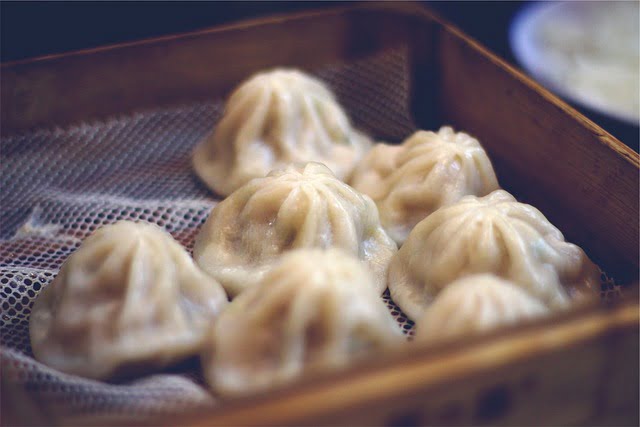Table of Contents
Decoding Dim Sum: Crafting Authentic Chinese Dumplings at Home
Dim sum, the intricate tapestry of Chinese cuisine, unfolds before us a world of culinary artistry. Within the realm of dim sum, dumplings reign supreme, offering a delicate yet profound experience that embodies tradition, technique, and the essence of shared nourishment. As we embark on this culinary exploration, we unveil the secrets behind crafting authentic Chinese dumplings from the comfort of our own kitchens.
The Pillowy Perfection of Dumpling Wrappers
At the heart of every dumpling lies its wrapper—a thin veil that cradles the essence within. The choice of flour becomes a pivotal decision, dictating the wrapper’s texture and flavor. Opt for all-purpose flour for a balance between elasticity and structure, or venture into the realm of wheat starch or rice flour for a delicate touch that echoes the traditions of the East. Yet, it is not flour alone that shapes the perfect wrapper.
Water, with its transformative touch, must be harnessed with precision. Achieve the ideal dough consistency—a harmonious fusion of water and flour—that results in wrappers that are pliable yet resilient, capable of embracing their fillings while retaining their structural integrity.
Filling the Heart of the Dumpling
Within each dumpling, a miniature world of flavors awaits, and the filling serves as its vibrant core. For those who savor the carnivorous, succulent pork, finely minced, dances in symphony with aromatics and seasonings. Venture further to the ocean’s depths, and treasures such as shrimp and crab intertwine, offering a taste of the sea’s bounty. But the allure of dumplings extends beyond the realm of meat.
Celebrate the garden’s generosity with plant-based fillings that burst with color and nuance. Spinach, mushrooms, and other vegetables become protagonists in this culinary tale, each bite a testament to the creative fusion of flavors.
Folding Techniques: Mastering Dumpling Shapes
The art of folding transcends the culinary realm, becoming an expression of culture and tradition. As we delve into the world of dumpling shapes, we encounter the classic half-moon fold—a timeless emblem of the craft. Delicate pleats encase the filling, marrying aesthetics with function. Each pleat tells a story, a lineage that connects us to generations past. But within tradition lies the canvas for innovation.
Unveil intricate designs that transform dumplings into edible sculptures. The “crab claw,” a delicate embrace of pleats that mimic nature’s elegance, and the “pleated crescent,” a fusion of geometry and taste, invite us to elevate the dumpling into a culinary work of art.
Steaming, Boiling, or Pan-Frying: Cooking Methods Unveiled
The journey of the dumpling continues within the realm of cooking methods, each technique a testament to the role of heat in transforming raw ingredients into harmonious creations. In the gentle embrace of steam, dumplings evolve into tender parcels, their wrappers retaining their delicate texture while fillings infuse with aromatic steam. Venture further to the realm of pan-frying, where sizzling symphonies unfold.
Dumplings acquire a golden hue, their bottoms kissed by the heat, creating a symphony of textures that harmonize with each bite. Yet, there exists a comfort in the act of boiling, where dumplings find solace in a comforting broth. Soup dumplings, delicate parcels of flavor nestled in a sea of warmth, beckon us to embrace both taste and emotion.
The Dipping Sauce Symphony
As we approach the dumpling, we encounter an essential partner—the dipping sauce. Here, a symphony of flavors awaits, each element contributing to a harmonious crescendo of taste. Begin with soy sauce, a foundational element that introduces umami richness. Explore the nuances of soy sauce varieties—light or dark, tamari or shoyu—each offering a unique profile that enhances the dumpling experience.
Elevate the symphony with vinegar, its tangy notes creating a dance of balance. Rice vinegar, with its gentle acidity, or black vinegar, with its deep complexity, enriches the ensemble, cutting through the dumpling’s richness with finesse. But no symphony is complete without a touch of heat. Chili and garlic join the orchestra, infusing the sauce with spice and aroma, elevating each bite to a new level of sensory delight.
Dim Sum Etiquette: Navigating the Dining Experience
The art of dim sum extends beyond the culinary creation, enveloping us in a world of etiquette and tradition. As we gather around the table, chopsticks in hand, we embark on a journey of cultural immersion. Mastering the art of picking up dumplings with finesse becomes an ode to tradition, a gesture of respect for the craft and the culture that birthed it. But dim sum is not merely sustenance; it is a communal ritual, a tapestry of sharing and savoring.
As plates circulate and conversations flow, we embrace the social tapestry that connects us, celebrating the joy of discovery as each dumpling unfolds its secrets before us.
Innovation with Tradition: Modern Dumpling Twists
The realm of dumplings transcends tradition, inviting us to infuse innovation into a timeless craft. Celebrate the beauty of fusion by marrying global ingredients with classic techniques. Embark on a culinary journey where traditional boundaries dissolve, and new dimensions of flavor emerge.
Delight in fusion fillings that reflect the diversity of the culinary world, introducing unexpected yet harmonious elements that redefine the dumpling experience. But innovation knows no bounds, extending even to dessert. Dessert dumplings—sugar-kissed treasures that nestle within delicate wrappers—challenge conventions and reimagine the possibilities of dim sum.
From Kitchen to Table: Serving and Presentation
The journey of the dumpling reaches its zenith as we bring our creations to the table. Plating becomes an art form, a canvas upon which flavors, colors, and textures converge. Arrange your dumplings with meticulous care, allowing the artful arrangement to reflect the culinary excellence within. Witness as each dumpling becomes a brushstroke in a larger masterpiece, harmonizing with the setting and captivating the senses.
The Joy of Sharing: Enjoying Homemade Dumpling Feasts
As we indulge in our homemade dumpling feast, a profound sense of accomplishment washes over us. Each dumpling is a triumph—a testament to our dedication, skill, and passion. As we savor the fruits of our labor, we are reminded that food is not merely sustenance; it is a conduit for connection.
Gather loved ones around the table and share in the joy of dumplings that transcend time, space, and borders. In each bite, we forge bonds, create memories, and partake in a culinary tradition that unites us in nourishment and love.
Quick Recipe: Homemade Chinese Dumplings (Jiaozi)
Ingredients:
For the Dumpling Dough:
- 2 cups all-purpose flour
- 1/2 to 3/4 cup warm water
For the Filling:
- 1/2 pound ground pork
- 1 cup finely chopped napa cabbage
- 2 green onions, finely chopped
- 2 cloves garlic, minced
- 1 teaspoon grated fresh ginger
- 1 tablespoon soy sauce
- 1 tablespoon oyster sauce
- 1 teaspoon sesame oil
- 1/2 teaspoon salt
- 1/4 teaspoon black pepper
- 1/4 teaspoon sugar
- 1/4 cup chopped cilantro (optional)
- 1 egg, lightly beaten (for sealing the dumplings)
For Dipping Sauce:
- 1/4 cup soy sauce
- 1 tablespoon rice vinegar
- 1 teaspoon sesame oil
- 1 teaspoon chili oil (optional)
- 1 teaspoon finely chopped green onion
Instructions:
Dumpling Dough:
- In a large mixing bowl, gradually add warm water to the flour while stirring. Mix until a dough forms.
- Knead the dough on a floured surface for about 5-7 minutes until it becomes smooth and elastic. Cover with a damp cloth and let it rest for 30 minutes.
Filling:
- In a large bowl, combine ground pork, chopped napa cabbage, green onions, garlic, ginger, soy sauce, oyster sauce, sesame oil, salt, black pepper, sugar, and cilantro (if using). Mix well until all ingredients are evenly incorporated.
Assembling Dumplings:
- Roll out the rested dough into a long log and cut it into small sections (about 1-inch each). Roll each section into a small ball and flatten it into a round wrapper using a rolling pin. Aim for thin edges and a slightly thicker center.
- Place a small spoonful of the filling in the center of the wrapper. Dip your finger in the beaten egg and run it along the edges of the wrapper.
- Fold the wrapper in half to create a half-moon shape. Press and seal the edges, making sure there are no air pockets or gaps.
Cooking Dumplings:
- Bring a large pot of water to a boil. Carefully add the dumplings and stir gently to prevent sticking. Cook for about 5-7 minutes, or until the dumplings float to the surface and the filling is cooked through.
- Alternatively, you can pan-fry the dumplings for a crispy texture. Heat a tablespoon of oil in a skillet over medium-high heat. Add the dumplings and cook until the bottoms are golden brown. Add water to the skillet, cover, and steam for about 5-7 minutes until the filling is cooked.
Dipping Sauce:
- In a small bowl, combine soy sauce, rice vinegar, sesame oil, and chili oil (if using). Mix well and garnish with finely chopped green onion.
Serving:
- Serve the cooked dumplings hot, accompanied by the dipping sauce.
Enjoy your delicious homemade Chinese dumplings (Jiaozi)! These dumplings can be a delightful appetizer, a main course, or a fun social activity when making them with friends and family.
Don’t forget to share your Yummy Yup Delights experience on social media platforms. Happy cooking and happy blogging!
Decoding Dim Sum: Crafting Authentic Chinese Dumplings at Home

